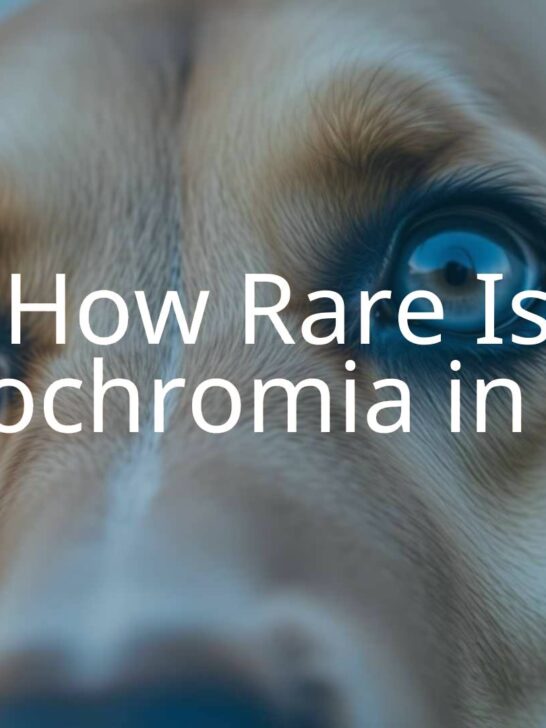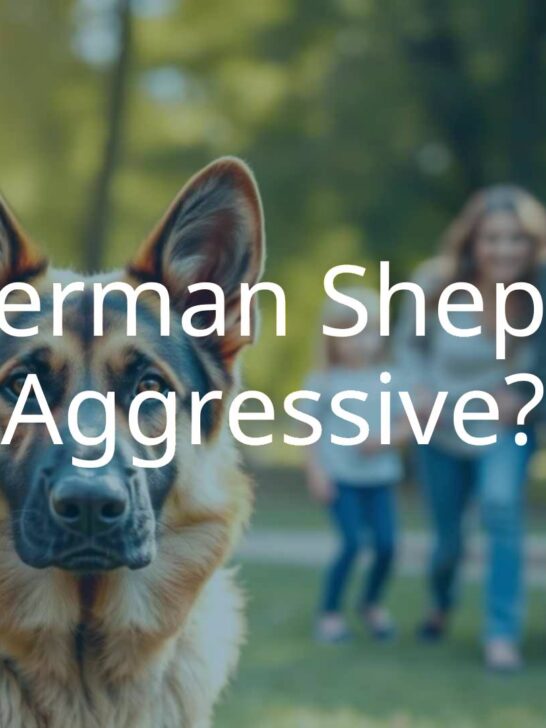Should I Get a German Shepherd: Important GSD Information to Consider
There is a lot to love about the brave, sweet, loving, and loyal GSD.
But the German Shepherd is also a dog breed that comes with a big time commitment and work attached.
These dogs come from a long lineage of working dogs that excel at high-energy jobs like herding, protecting, and guarding.
Staying busy is in the German Shepherd’s bloodline.
This means that owning and caring for a German Shepherd comes with some special considerations – this is not the dog breed for everyone.
However, for the right person or family, there is no better pup to share your life with than a German Shepherd.
In this article, let’s take a look at what to think through to decide whether the GSD is the perfect breed for you.
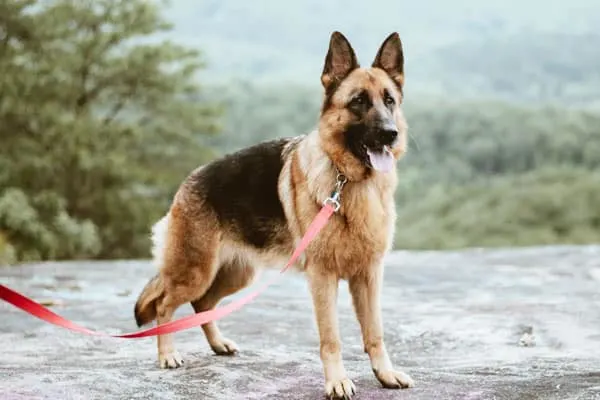
Should I Get a German Shepherd?
Should you get a German Shepherd dog?
The answer to this question revolves around your time availability, lifestyle habits, and interests.
Do you want a dog to be the center of your world and of your family’s life?
Do you love leading an active lifestyle exploring the great outdoors with your dog?
Do you have at least two hours each day to train, socialize, play with, and exercise a dog?
If you answered “yes” to all of these questions, then a German Shepherd dog might be a great canine companion for you.
Learn From a German Shepherd Owner What You Need to Know
This YouTube video offers a great overview of the German Shepherd dog breed.
One thing you will hear right away is that these dogs were always designed to be bred for temperament rather than appearance.
This is very important to remember when you are picking out your GSD puppy, as we will discuss here in a later section.
A Brief Background Into the German Shepherd Dog’s History
As the German Shepherd Rescue Elite charity explains, the GSD got their breed to start more than a century ago in 1899.
The breed’s founder, Captain Max von Stephanitz, was absolutely committed to creating a working dog that had no equal.
The good captain didn’t care much about what this new dog breed would look like – he only cared about work ethic and athleticism.
In the breed’s earliest days, Captain von Stephanitz crossbred with a hybrid dog/wolf, which did give these dogs a certain wolf-like appearance.
But this was incidental to the desirable qualities von Stephanitz saw in this early dog.
The first German Shepherds worked in livestock herding and guarding dog roles, at least up until the first World War.
After the war, all things German fell out of favor, and n the UK, the breed was temporarily renamed the Alsatian Wolf Dog.
Clearly, this name didn’t stick, and today the German Shepherd dog has their original name back.
Today, thanks to movies like “Strongheart” and the GSD’s heroic service in police, military, and security jobs, these dogs are popular around the world.
As of the time of publication, the American Kennel Club (AKC) registry shows that the German Shepherd is the second most popular purebred dog in the whole United States, edged out only by the irrepressible Labrador Retriever.
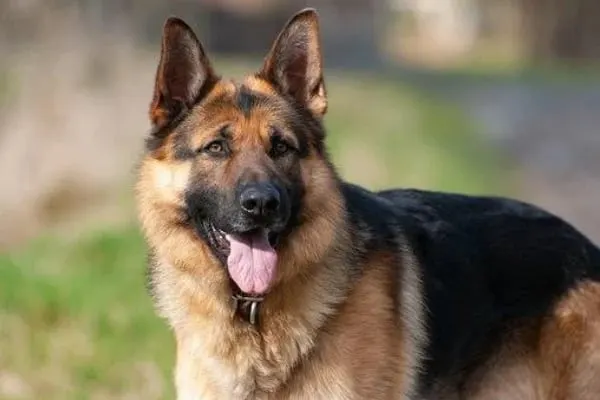
Classic German Shepherd Traits to Know About
As we mentioned in an earlier section here, the German Shepherd dog breed was always developed to do a certain specific type of work.
For this reason, the breed’s founder, Captain Max von Stephanitz, sought out dogs with specific qualities and traits to found his new dog breed.
It is important to know about these specific traits because they mean your dog will need certain things from you to be a happy and healthy part of your family and community.
High energy level and need for exercise
German Shepherds have always worked in high-intensity K-9 jobs, often in dangerous circumstances and in all kinds of weather.
German Shepherds were never designed to be kept as companion canines – or “pets.”
So when your primary goal for choosing a German Shepherd dog is to have a family pet that can also step in on occasion if guarding is necessary, you will have to find something else for your dog to do to burn off all that extra energy.
Canine athletics, K-9 training, working as a service or therapy dog, or just going for long hikes and runs can be perfect options.
It will also be important to wait until your dog is done growing to add strenuous exercise, however.
This can mean tolerating a very, very active puppy in the house until the long leg bone growth plates have closed and you can give your dog more exercise without risk of joint or bone injury.
Intense guarding instinct
As you would expect with a dog bred to guard and protect, the German Shepherd dog is going to come to you with an intense guarding instinct that is both desirable and difficult.
Your dog will look to you to help them figure out the difference between a friend and a potential threat.
This includes dealing with other people and with other dogs.
You will need to be prepared to set a strong example for your puppy right from day one.
Your German Shepherd puppy won’t stay little for long, and will quickly become difficult to control if not taught restraint and discretion from the start.
Strong prey and chase drive
The German Shepherd has always had a very important and difficult job as a herding and protection dog.
These dogs have been protectors to animals and people since the first days.
Because of this, the GSD has retained a very strong prey drive and chase drive that is just part of the breed’s temperament.
If your family includes other small pets that will not be able to quickly move out of reach or defend themselves in some other way, you may want to reconsider your choice of a German Shepherd for their safety.
Deep need to “herd”
As you learned in the section here about the GSD breed history, the very first German Shepherd dogs were developed to work as herding and guarding dogs.
These dogs were lean and rangy, lightning-fast, and very strong and confident as they herded and protected large herds of livestock animals from predators and poachers.
Today, this often shows up when your German Shepherd tries to “herd” you and your family members – even other family pets.
This may entail leaning on you, nipping at you, or nudging you.
If your family includes small children, you may want to wait until your kids are older before getting a German Shepherd dog, since this type of behavior can be upsetting to little children.
Natural aloofness with strangers
There is a good reason the Labrador Retriever continues to be more popular as a pet dog than the German Shepherd.
As every dog lover knows, Labrador Retrievers are typically famously friendly. It can feel like these dogs have never met a stranger.
German Shepherds are just the opposite.
An adult German Shepherd will be naturally aloof and guarded around people and animals not known to them.
This can create tension or anxiety if you love to entertain or have kids that want to have their friends over to play frequently.
You will need to take extra care to socialize your German Shepherd to tolerate frequent guests without incident.
Tendency towards aggressiveness
As PetMD explains, the German Shepherd has a known tendency towards assertive or even aggressive behavior towards strange people and dogs.
The German Shepherd Dog Club of America (GSDCA) explains that there is a temperament test that reputable, responsible breeders do with prospective breeding stock (parent dogs) to ensure puppies with balanced temperaments.
This is vitally important to understand before you pick out your puppy.
While some level of natural assertiveness and confidence is desirable in a guarding and protection dog, an adult GSD’s aggressive behavior can cause deep harm to you, your family, and your community.
Very vocal dog breed
German Shepherds are said to be a very “vocal” dog breed – and this doesn’t just mean barking.
These dogs have a whole range of sounds they use to communicate with you, from whining and grunting to groaning and whimpering.
In a working dog role, the dog might use this range of sounds to communicate with the livestock they were guarding or with their human work partners.
In a pet setting, all that sound will be directed towards you.
Strong need for affection and connection
In the same way, the German Shepherd is quite simply not a dog that can tolerate being left alone.
And getting a GSD another canine companion will not be a solution, either.
In a working dog capacity, a German Shepherd would spend their day working independently from people in many respects but still surrounded by people as well as many other animals.
At night, the German Shepherd would still be closely connected with both animals and people.
These dogs have made their reputation as a protection breed precisely because they become so closely bonded to their work and those they are protecting.
If your dog is not able to be with you, anxiety is the likely result.
And a strong, smart, anxious German Shepherd is a force to be reckoned with – destroying your house or yard or repeatedly escaping or both are likely outcomes.
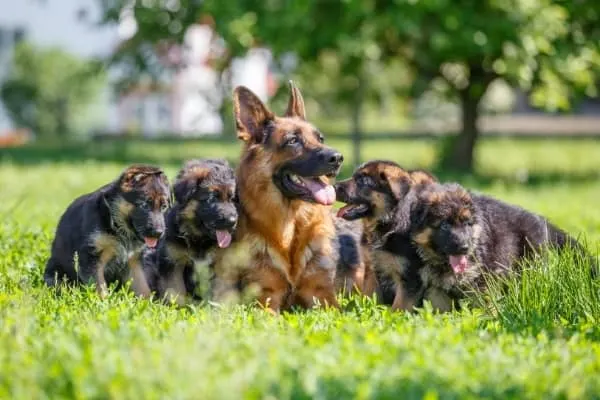
Meet the Two “Lines” of the German Shepherd Dog Breed
There is another important characteristic of the German Shepherd dog breed as a whole that you need to be aware of before you choose your puppy.
When Captain von Stephanitz first began to develop the German Shepherd as a breed, he really didn’t care much what his dogs looked like. He cared about how they performed and behaved.
So the earliest German Shepherds all shared some physical characteristics, but this was not a priority.
Even after Captain von Stephanitz’s death, most breeders continued to breed to the standard he developed for many years of prizing temperament overlooks.
But eventually, as the GSD became more popular outside of working and guarding circles, this led to a split in the breed line.
While one group of GSD breeders opting to continue to breed for temperament and traits over appearance, another group of GSD breeders chose to breed a GSD that looks more uniform to meet the expectations of a new group of buyers – pet dog owners.
Today, that split continues to persist and has sparked some serious concerns about the overall health and soundness of the breed itself.
“Show” German Shepherd dogs are dogs bred to the American Kennel Club or United Kennel Club (or other international clubs) appearance standard.
“Working” German Shepherd dogs are dogs bred to the original temperament-based breed standard that breed founder Captain Max von Stephanitz developed.
Show GSDs will look like the classic German Shepherd but may have structural or temperament issues as a result.
Back and joint problems are two particular health concerns you need to be aware of.
Working GSDs may look less like the modern German Shepherd dog that is recognizable to most people on sight.
But they tend to be more uniform in their temperament and have more skeletal and joint stability.

How to Choose a German Shepherd Puppy
After reading through this information, you now have a much better sense of what it might be like to own and care for a German Shepherd dog.
When you are choosing your puppy, you want to select a reputable, responsible breeder that orders pre-screening health tests on their breeding stock (parent dogs).
These tests rule out the possibility of passing genetic health issues on to the puppies.
A good GSD breeder will give you an initial guarantee of health, pedigree papers, and a take-back guarantee if things don’t work out for any reason.














